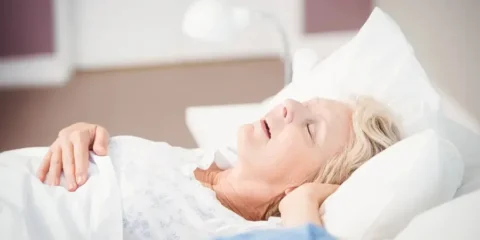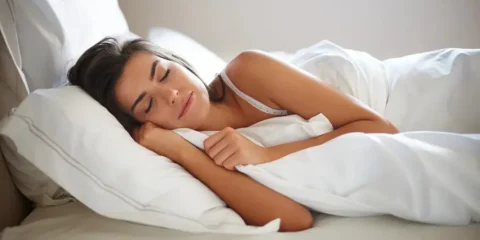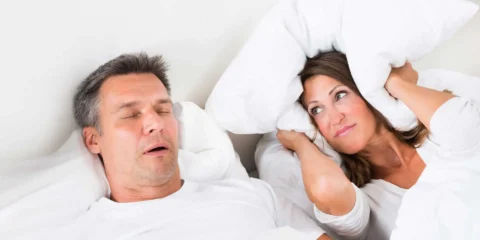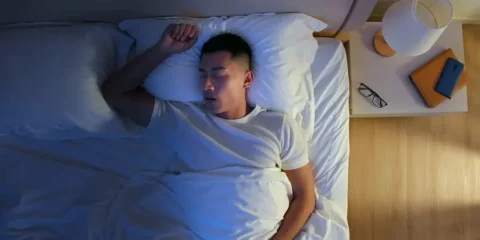Trying to lose weight? The key may be your sleep researchers say.
Many people have struggled with weight loss, trying diets, exercise programs, and supplements, only to see disappointing results. Other people have been successful in losing weight. There can be many reasons why weight loss attempts succeed or fail, but most people didn’t know what researchers have discovered.
Sleep Disordered Breathing (SDB) is an epidemic in America, and it has seemed to be tracked along with the weight gain of the general population over the past 40 years.
Sleep-disordered breathing includes obstructive sleep apnea, as well as hypopnea. Apnea means cessation of breathing (while sleeping) for a period of time. Hypopnea refers to reduced breathing that leads to lowered blood oxygen levels. Both of these are collectively referred to as “Obstructive Sleep Apnea”.
Sleep apnea is diagnosed with a sleep study, that can be done in a specialized laboratory or at your own home in your bedroom. The sleep study will give you a score, and tell you if you suffer from any degree of sleep apnea. The score is a number called AHI or Apnea-Hypopnea Index or AHI.
Here is the interesting part:
In the late 1980s and early 1990s, several studies identified that about 8% of women and 25% of men had some degree of obstructive sleep apnea. About 10 years later, that number was revised to about 17% of women and 34% of men (aged 30-70 years old).
In the past 7 years, population studies have shown that about 46% of adults (59% of men and 33% of women) have some degree of sleep apnea as measured with randomized sleep studies (measuring the AHI).
Another trend is the degree of severity of sleep apnea or sleep disorder. A study using more sensitive equipment with at-home testing of random individuals not only noted that about one half of the population had sleep apnea of at least mild, but 23% of women and 50% of men had moderate to severe sleep apnea, which is much more linked to being overweight and developing health problems (and shortening lifespan and healthspan).
But wait, there’s more:
This trend of increasing sleep disorder has tracked the CDC tables of weight gain in America. So what is happening? There have been numerous studies that have shown that losing weight can improve sleep apnea scores when sleep apnea is mild. But weight loss alone isn’t particularly effective at normalizing AHI sleep scores. Weight loss only helps to a variable degree.
The big story is that obstructive sleep apnea (untreated) makes it less likely that your weight loss attempts will be meaningfully effective. Published in Mayo Clinic Proceedings, the presence of obstructive sleep apnea (measured with a sleep study) blunted the weight loss in participants in a lifestyle management program vs individuals who didn’t have obstructive sleep apnea.
Another study showed that individuals with sleep apnea who were treated for the apnea had significantly greater weight loss than those who did not treat the sleep apnea.
So what is the catch?
Sleep apnea is common. It is estimated that about half of the American adult population has some degree of sleep apnea. We know that as a society we are getting heavier. We know that sleep disorder leads to weight gain, and weight gain leads to worsening of sleep apnea.We also identified that it is harder to lose weight if you have untreated sleep apnea and that individuals who have and treat sleep apnea are more able to lose weight than individuals who do not treat their sleep apnea.
The catch is that sleep apnea is underdiagnosed. It is estimated that 80% of people with sleep apnea have no idea that they have this condition. Doctors are underdiagnosing sleep apnea due to a lack of awareness of this silent killer and the complexities of insurance reimbursement for sleep studies. And who wants to go to a laboratory, be hooked up with probes and sensors, and be observed while their sleep is measured?
In addition to that, only 30% of people with known sleep apnea adhere to the conventional treatment of a CPAP machine over the long term. A CPAP machine straps over your nose and mouth and helps force air into your lungs while you are sleeping for individuals whose airways get obstructed while sleeping. It isn’t a pleasant way to sleep, but they do work and have been the standard of care for years.
And keep in mind that the mentioned study included attempts to lose weight. CPAP treatment for apnea alone doesn’t work for weight loss without attempting to cut calories, modify diet or exercise.
Is there an easier way?
We have 2 issues.
1: Sleep apnea is underdiagnosed because insurance will not pay for routine screening and a sleep lab study is very expensive.
2: The standard treatment of sleep apnea involves wearing a strap over your face at night and you are attached by a hose to a machine.
Solution
1: Home wearable tests. The FDA has approved the use of small wearable monitors that are tested as being as effective as a complex, in-lab, monitored expensive sleep study for most people. These are relatively inexpensive (about $300) and if your insurance doesn’t cover them because you don’t meet their strict criteria, you can purchase one through a qualified doctor’s office (we have them).
WatchPAT ONE Home Sleep Apnea Test – How to Use – YouTube

WatchPAT One – Home Sleep Apnea Test – YouTube


2: What about reversing your sleep apnea? Weight loss can help reduce sleep apnea, but as discussed, sleep apnea sabotages your attempts to lose weight. Numerous studies have shown that weight loss helps reduce the severity of sleep apnea slightly, but it rarely resolves it.
NightLase® is a laser treatment that was originally designed to shrink the excess or lose tissues in the back of the throat that cause snoring. Recent advances in the procedure have led to the ability to regenerate the airway and reduce sleep apnea. The average reduction in sleep apnea severity (as measured by AHI score) is 66% after only three virtually pain-free sessions (every two weeks).
The laser is done while you rest in a chair by a technician who is trained in the operation of the procedure. It takes about 20 minutes and there is no downtime except a dry throat for a few hours.
It is unknown how long the results will last for you because as we continue to age, apnea becomes more frequent and gets worse, so some maintenance is likely over time. The cost is $800 a session for the laser treatment.

For any individual wanting to lose weight, there are many considerations. Habits have to change, food choices have to be considered, and activity levels need to be addressed. But a hidden and much-unrecognized aspect to a healthier life is the quality of sleep. Sleep-disordered breathing hasn’t had a lot of attention because it was hard to diagnose and unpleasant to treat.
You have options and can take control of your own health. A sleep study costs as little as $300 and takes as long as one night. Reversing sleep apnea with simple laser treatment can get you to better sleep as quickly as one month.
Peppard PE, Young T, Barnet JH, Palta M, Hagen EW, Hla KM. Increased prevalence of sleep-disordered breathing in adults. Am J Epidemiol. 2013; 177:1006–1014.
Bixler EO, Vgontzas AN, Lin HM, et al. Prevalence of sleep-disordered breathing in women: effects of gender. Am J Respir Crit Care Med. 2001; 163:608–613
Quan SF, Howard BV, Iber C, et al. The Sleep Heart Health Study: design, rationale, and methods. Sleep. 1997; 20:1077–1085
Young T, Palta M, Dempsey J, Skatrud J, Weber S, Badr S. The occurrence of sleep-disordered breathing among middle-aged adults. N Engl J Med. 1993; 328:1230–1235
Prevalence of sleep-disordered breathing in the general population: the HypnoLaus study. Lancet Respir Med. 2015 April ; 3(4): 310–318. Heinzer et al
Prevalence and association analysis of obstructive sleep apnea
with gender and age differences – Results of SHIP‐Trend J Sleep Res. 2018;e12770.
Effectiveness of Lifestyle Interventions on Obstructive Sleep Apnea (OSA): Systematic Review and Meta-Analysis SLEEP, Vol. 36, No. 10, 2013. Pp 1553-
Ten-year adherence to continuous positive airway pressure treatment in patients with moderate-to-severe obstructive sleep apnea.Sleep and Breathing (2020) 24:1565–1571.Tsuymumu et al
Bidirectional Relationships Between Weight Change and Sleep Apnea in a Behavioral Weight Loss Intervention. Mayo Clin Proc. 2018 September ; 93(9): 1290–1298.Kline et al
The Impact of CPAP on Intensive Calorie Restriction Weight Loss Journal of the Endocrine Society, Volume 3, Issue Supplement_1, April-May 2019.Mao et al.
Minimally Invasive Combined Nd:YAG and Er:YAG Laser-Assisted Uvulopalatoplasty for Treatment of Obstructive Sleep Apnea. Photobiomodulation, Photomedicine, and Laser Surgery Volume 39, Number 8, 2021.Pp550-557.Shiffman et al
Does CPAP Lead to Change in BMI? Journal of Clinical Sleep Medicine, Vol. 4, No. 3, 2008.Redenius R et al.pp 205-209.









